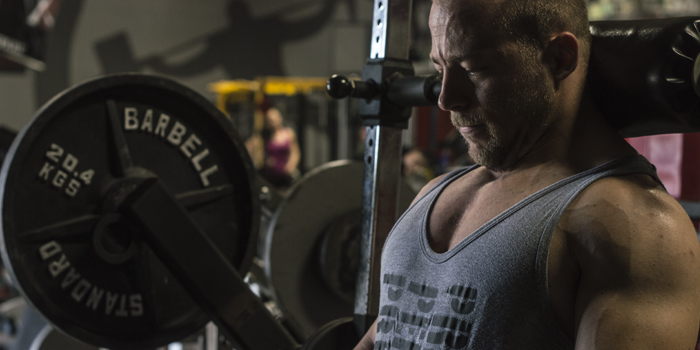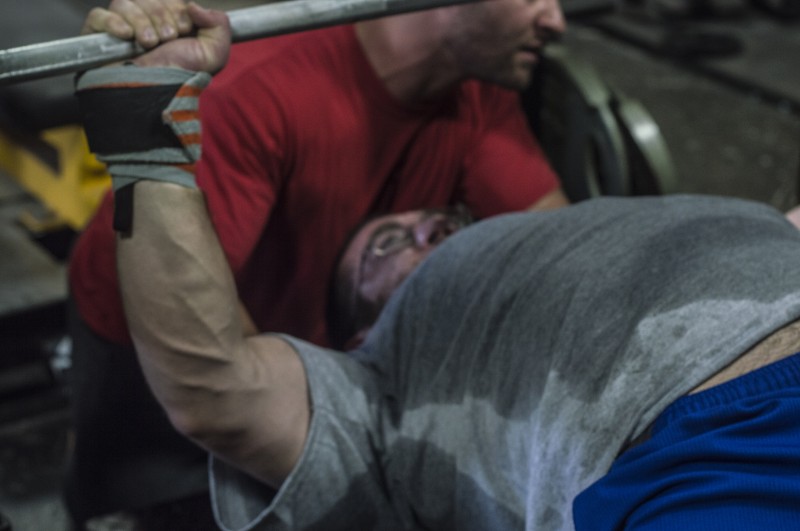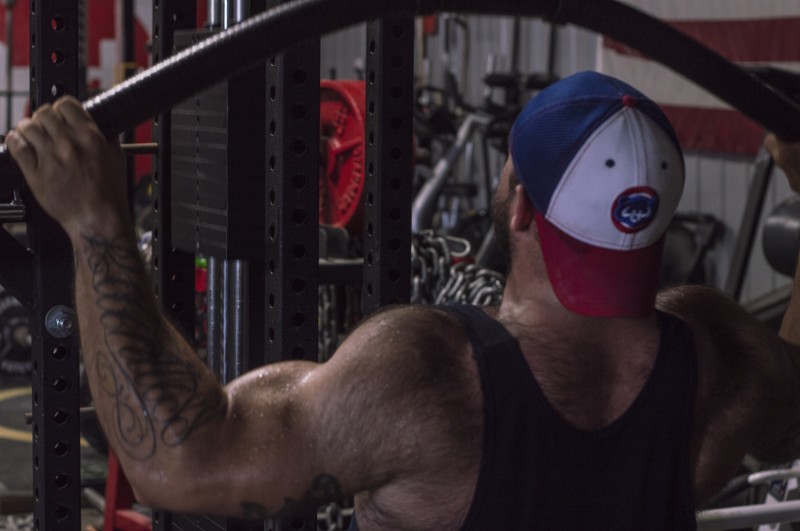
If I asked the average athlete to define movement economy for me, I would probably get some form of a generic answer in the ballpark of “exercising correctly.” While variations of this answer, along with this specific answer itself, are not entirely incorrect, they do lack substance. In this article, I aim to clarify this concept and operationally define movement economy as it relates to sporting performance through a detailed and layered description for athletes to use in both training and competition.
The broadest sense of movement economy in sports starts with the theory of specificity — the idea that the things we do the most, and the manner in which we do them, are the things we become best at. So if I were an Olympic swimmer, I would want to perform exercises that have the most transfer of training to my sport in both movement selection and energy system utilized1,2. Now, this doesn’t mean other less specific exercises and energy systems don’t have a place in my periodized training depending on what phase I’m in; it just means they don’t make up the bulk of any of my training cycles. In this instance with regards to movement economy in sports, according to the theory of specificity, I would want to become proficient at the exercises that directly make me a better swimmer. You can see that this broad concept is also rooted in the idea of programming economy for sport. I will refer you to my article titled "Programming Economy" for a more detailed description of this foundational concept of movement economy.
MORE: Programming Economy — 5 Exercise Categories
While the theory of specificity and the concept of programming economy broadly outline the programming aspect of movement as it relates to sporting form, it fails to cover the specific movement patterns of the individual performing the exercises prescribed. After learning new movement patterns our bodies tend to quickly and grossly adapt these patterns to the capabilities of the individual in an effort to merge the function of movement with the minimal amount of metabolic energy expenditure required3. Our bodies will integrate and accommodate their own unique combination of dimensions and mechanical characteristics so that they arrive at specific movement patterns for an exercise that are most economical for them4. Essentially our bodies will perform the exercise prescribed, outside of the influence of fatigue and intensity, within our physical limits in a way that uses the least amount of energy possible. This sounds like the epitome of movement economy in sport, right? I mean, how much more economical can our bodies be if they naturally adapt to movement in the most energy-conserving way possible within the physical limitations of the individual? While this notion sounds like the holy grail of an operational definition, it fails to address the effect of fatigue and intensity on movement, which is the foundation of any sporting event. It also fails to address the potential for increasing movement economy which, as we will see, is correlated to increases in sporting performance.
So when thinking about increasing movement economy, two big questions should come to mind that need to be addressed: Can an athlete’s movement economy be increased? If so, how?
With regards to these questions, we must start by understanding the role of movement economy on energy consumption. Generally, the less dynamic appendicular and axial displacement that a person mechanically generates outside of what is absolutely necessary to complete a physical task, the less energy they will use. Example: If I perform a biceps curl where I bend forward, pop my hips, curl my arm, and flex my shoulder, how much energy have I used compared to standing erect and neutral while performing a strict arm curl without flexing my shoulder? They both achieved the desired outcome, but the "cheating" version created the most appendicular and axial displacement, and thus used more energy. The less body movement utilized to reach a movement objective is the backbone of our operational definition of movement economy in sport.
Now that we understand the backbone of our operational definition, we can start to address the two big questions. Any deficiency in movement economy can essentially stem from three major sources: they can be fatigue-induced, structurally-induced, or strength failure-induced. Fatigue-induced refers to how our attention to movement detail goes out the window as our heart rate and respiratory rate get really high. Our focus shifts from monitoring our movement in space to, “I hate this, why am I doing this” and then to “just get the next rep.” This is when our elbows start to drop in front squats causing a forward trunk lean, or kipping pull-ups become less rhythmic and more spastic like a flopping fish. If you just took the time to slow down a minute and refocus on your form, it would save you energy (and help prevent injury) for the rest of the workout. Sometimes to take two steps forward we have to take one step back. The best part about this movement economy deficiency is it can be fixed right now and everyone has direct control over it.
The second movement economy deficiency source refers to those that are structurally-induced. This is where we lack the functional range of motion (ROM) across certain joints to perform a specific exercise as efficiently as it could be performed if we had full functional ROM in those joints. This is where mobility work and redneck strength coach engineering come into play. The long-term answer to this problem is stretching and mobility work aimed at achieving a desired ROM across a restricting joint in a certain movement pattern. The problem is that this takes a lot of time and doesn’t happen overnight. That doesn’t mean you should ignore it, it just means you have to work at it a little every day until the mobility fairy visits you one night and blesses you with the ROM needed to efficiently perform the movement you’re aiming to improve. Not sure where to start on this? Find a local physical therapist and make an appointment.
The short-term answer to structurally-induced movement economy deficiencies is what I call redneck strength coach engineering. Let’s say you have trouble getting into the front rack position for front squats (this is my go-to example). Should you just perform them to the best of your abilities? Even if this makes you hunch forward during your squat, creating greater torque demands on the spine, and shifts your center of mass forward, forcing you onto the balls of your feet? The correct answer is no, you shouldn’t. This not only requires much more energy to perform the movement in this manner, but performing broken reps like this increases your risk of injury. Plus, it does nothing to increase your ROM or mobility. This is where you become a strength coach and engineer ways to perform prescribed movements closer to the economical standard so you can safely put in more work. For the example given, you could use lifting straps around the bar that will help you achieve higher elbows, a more upright posture, and more stable front rack position. Just by tweaking how the movement is performed you have increased your work abilities for the training session and reduced your chance of injury.
The third movement economy deficiency source is strength failure. This is where you are performing perfect repetitions and everything’s going great, then one muscle group gives out and you find yourself performing reps in a manner that saps every ounce of available energy from you. A good example of this is yoke walks for strongman. The reason you wrap your arms around the implement, or have your hands inside and press out on it, is to create stiffness in your upper back. This helps stabilize the core, which creates a more efficient walk under heavy loads applied to the upper back. If your upper back gives out because it’s not strong enough to perform the action it’s tasked to do, the implement starts to move around, your steps become random, and your core begins to torque and flex under the load. Moving in such a manner requires so much more energy than when walking with the yoke and the only thing moving on your body is your legs. The moral of this story is that if you have a limiting factor in your movement economy that is strength-failure related, back off the weight to perform the reps correctly and start to program more exercises into your training to bring this freeloading muscle group up to speed with the rest of your body.
If you’re an athlete in any sport, finding ways to improve your movement economy in your training and sport should be a top priority for you. One of the common denominators for successful athletes at the highest levels of all sports is impeccable movement economy within their sporting performance. With increases in sport-technical indicators we see an increase in sport qualification, which leads to high achievements and sport mastery5. In other words, at these higher levels of competition, the natural selection process tends to eliminate athletes who have failed to either inherit, or develop, characteristics that favor movement economy in their sporting performance6.
I like to use Rich Froning as a good example. This man won the CrossFit games four years in a row and every time I watched him compete, every repetition of any lift he performed looked the same. From the first rep, to the last, there was very little variation. His movement economy was almost perfect and that’s one of the reasons why he was always in the top three or five finishers in every event, and subsequently had more gas in the tank at the very last event compared to all the other competitors. So if you compete, in anything, movement economy in your sport should be something you pay attention to for every repetition you spend at the gym and on the platform. Need mobility work? Do it. Not strong enough in a certain area of your body? Get stronger there. Tired and not paying attention to your body while training? Suck it, buttercup, and pay attention to it. This is a major part of how great athletes are created.
RECENT: Building the Perfect Pressing Platform — From Feet to Shoulders
To review the outline of this operational definition, we started by talking about the theory of specificity and programming economy, and how this helps narrow the scope of our programming, exercise selection, and means of exercise application. With the programming in place, it’s important to understand that outside of the influence of fatigue and intensity, athletes will quickly learn to perform the prescribed exercises as efficiently as possible within their physical limits. But sporting performance is not void of fatigue and intensity, so we shouldn’t be content with this. We should ask ourselves if it's possible to be better. This led us to defining the means by which movement economy is decreased and movement deficiencies occur: excessive axial and appendicular displacement. From here, we worked to categorize the three types of movement deficiency sources that create this energy-consuming movement pattern: fatigue-induced deficiencies, structurally-induced deficiencies, or strength failure-deficiencies. Being able to recognize the source of these gives us the opportunity to either spot correct them (fatigue-induced), or work to correct them through mobility training and exercise selection (structurally-induced and strength failure). At this point, understanding the impact of these dysfunctional patterns on sporting performance is to understand the correlation between high movement economy and sport mastery achievement. All of this information together helps complete our understanding of how movement economy is compromised, corrected, and maximized, which gives way to an understanding of how this operational definition is applied across the spectrum of various training environments and sporting events.
Now I’m not a smart guy, nor did I stay in a Holiday Inn Express last night, so I’m not just trying to make something more difficult than it has to be. Just like anybody else, I appreciate simplicity for simplicity’s sake, but as athletes we have to understand the complexities of certain concepts as they relate to our sport in order for us to progress. This is why I have clarified the concept of movement economy and operationally defined it for athletes to use both in training and competition. So take this information, implement it into your training, and become a movement master in your sport. Your PR's will thank you for it.
References
- MacIntosh B.R. Gardiner P.F. McComas A.J. Skeletal Muscle: Form and Function. Second Edition. Champaign, IL: Human Kinetics; 2006.
- Powers S.K. Howley E.T. Exercise Physiology: Theory and Application to Fitness and Performance. Eighth Edition. New York, NY: McGraw-Hill; 2012.
- W.A. Sparrow K.M. Newell Metabolic energy expenditure and the regulation of movement economy. Psychonomic Bullitin and Review. June, 1998; 5(2): 173-196.
- Anderson T. Biomechanics and running economy. Sports Med. August, 1996; 22(2): 76-89.\
- Medvedyev A. S. A System of Multi-Year Training in Weightlifting. Livonia, MI: Sportivny Press: 1989.
- Behbacke R.R. Duffin J. The entertainment of breathing frequency by exercise rhythm. J Physiol. Nov, 1977; 272(3): 553-561.












2 Comments